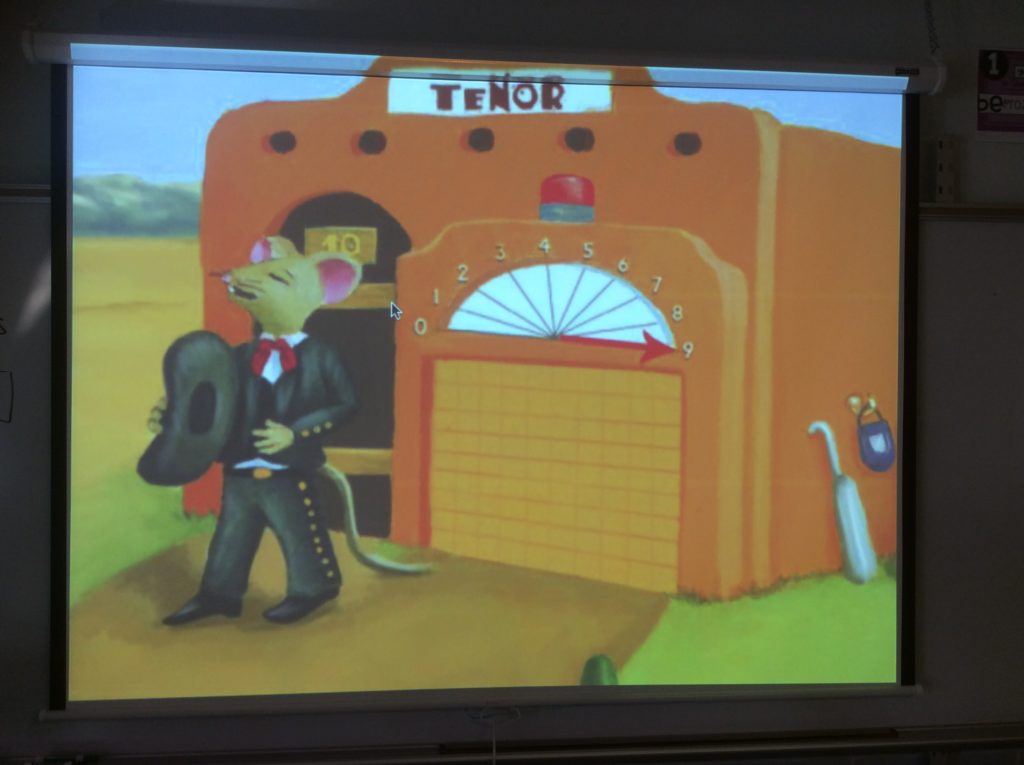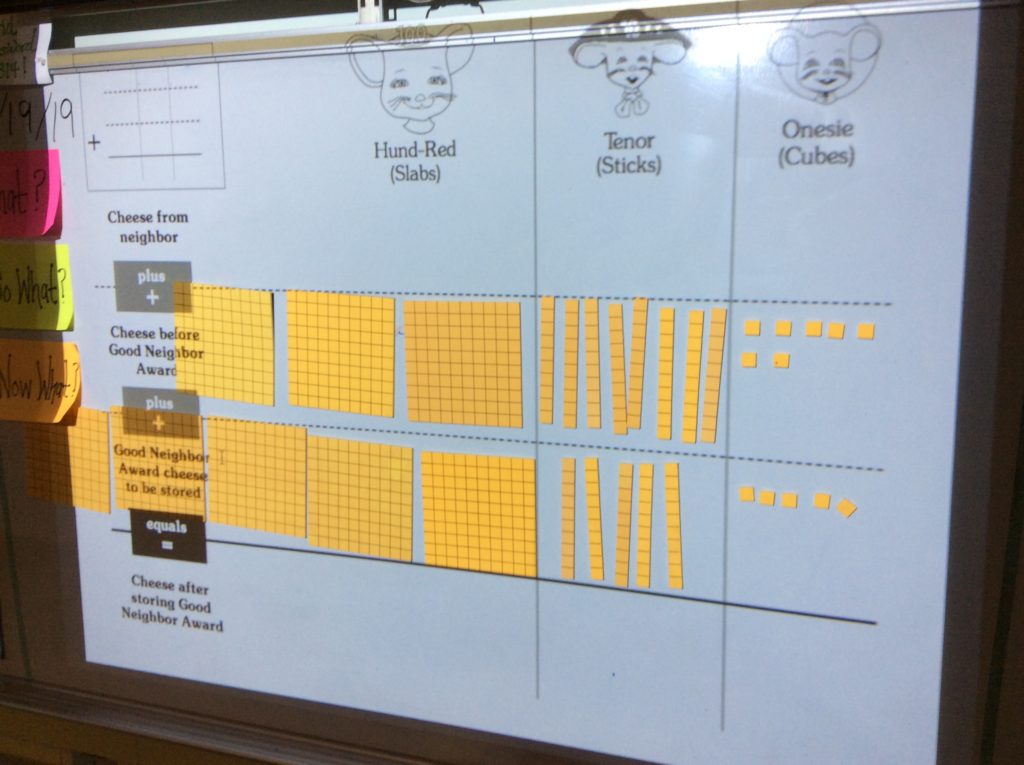The Good Neighbors Store an Award - Instruction Ideas
1.
Read the book to introduce the concept/process of addition with regrouping
Let the students enjoy the story and unknowingly gain context and prior knowledge of the concept/process of addition with regrouping. If you have the the ability, project the ebook and turn a 18 in. X 11 in. spread to a 6 ft x 5 ft spread. Zoom in on specific aspects of the illustrations!


2.
Reread the book with an explicit focus on the addition with regrouping process within the story
Model the addition with regrouping within the story (using base ten blocks or drawings) while you read the story. Projecting the Addition Template from the Primary Blackline Masters on a white board is a great way to do this. You can use magnetic base ten blocks, or draw block representations.


3.
Give students the Addition Template and an addition problem to solve by drawing base ten blocks
Give students repeated practice with the process. When students are able to draw the process they understand the concept/process. Encourage students to draw the blocks in rows of five, so counting and making groups of ten is made easier. Start with adding tens and ones. When students master tens and ones, have them add numbers in the hundreds.

4.
Learn about "Bridging the Gap" between the pictorial and the numeric representation of the standard algorithm with the 'Hybrid Method'
Some students do very well solving problems pictorially with base ten notation, but struggle when they transfer to solving problems numerically. Watch the video below and see how students can benefit from a ‘Hybrid Method’.
Watch the video below to learn how to set-up and teach students to perform the ‘Hybrid Method’.
5.
Model the "Bridging the Gap - Hybrid Method" and let students practice
Printable Number and Story Cards for the “Hybrid Method”


6.
Guide students solving addition problems numerically
Students can solve the problems numerically using the Addition Template for the greatest support or blank paper for less support. Start off with just adding tens and ones. Build up to adding hundreds when students are secure with tens and ones.


